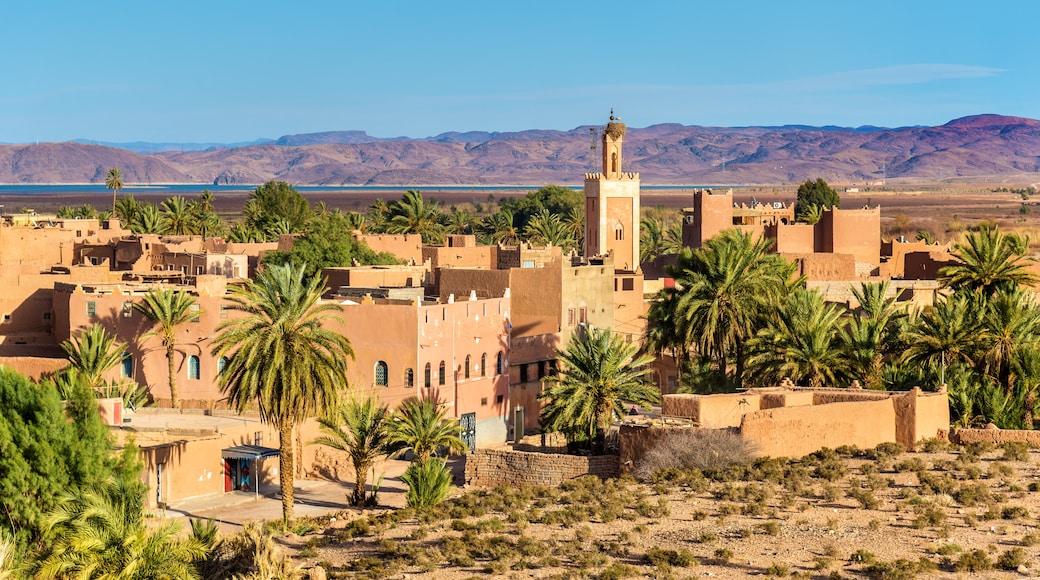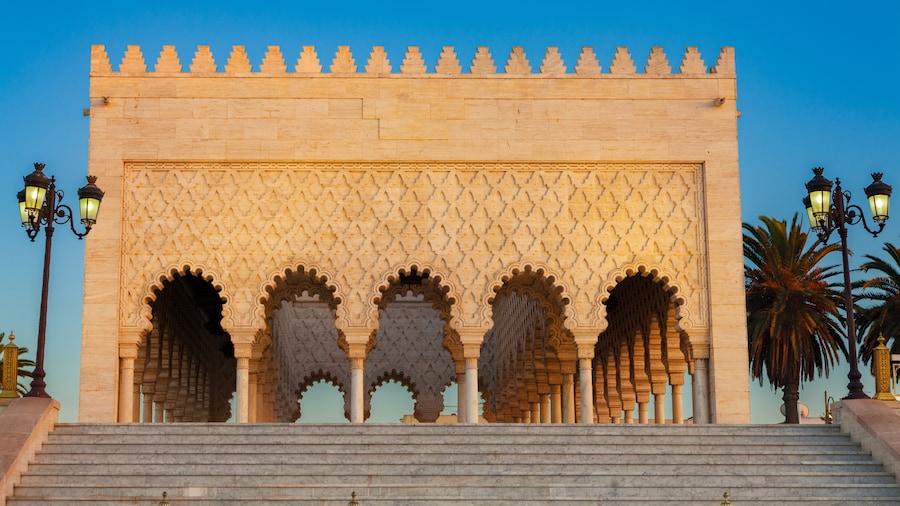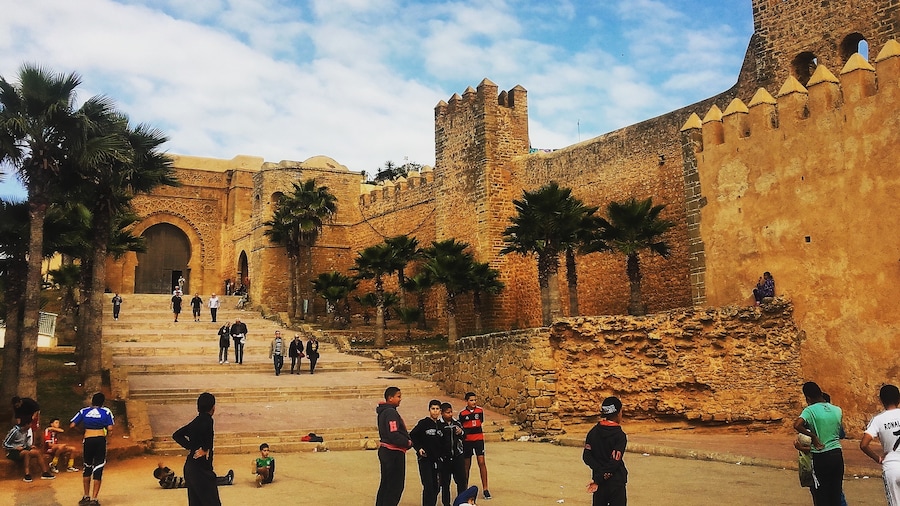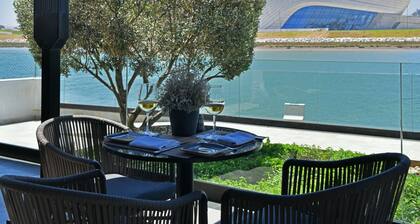The square-shaped, brick Hassan Tower (Tour de Hassan) and the green tiled pyramid of the Mohammed V Mausoleum next door are two of the most striking landmarks of Rabat. You can spot the Hassan Tower from far away and while there isn’t much around, it tells you a lot about the capital’s history.
Yaqub al-Mansur, the third caliph of the Almohad dynasty commissioned a grand mosque towards the end of the 12th century to celebrate his victory over the Spanish Christians at Alarcos. He had great aspirations for this religious building and its minaret was supposed to become the tallest in the world. However, the caliph died in 1199 before the mosque was built. The construction ceased right away and the Hassan Tower only ever reached 144 feet (44 meters).
In 1755 an earthquake hit the city, destroying parts of the unfinished mosque, but the tower stood strong and is still one of Rabat’s tallest structures today. The 200 mosque columns and the ruins of some of the unfinished mosque walls also remain. The tower can't be climbed but you can walk around it to see how each side has a differently patterned ornament carved into the ochre walls.
Right next door to the Hassan Tower is the King Mohammed V Mausoleum, which also contains the tombs of his sons. The mausoleum was finished a decade after his death, in 1971. Prince Abdallah was buried here in 1983 and King Hassan II followed in 1999. Despite it being designed by the Vietnamese architect Éric Vo Toan, it is considered a masterpiece of modern Moroccan craftsmanship because it was commissioned during the current Alaouite dynasty. The pyramid-shaped green tiled roof is supported by white marble walls.
The Hassan Tower and Mausoleum of Mohammed V are located along the Boulevard Mohamed Lyazidi in Rabat. There are parking spaces near the entrance. If you are interested in monumental minarets, the Hassan Tower is just a short drive from Chellah, which has an even more ancient tower. The minaret is part of a ruined mosque in a medieval fortified necropolis.















